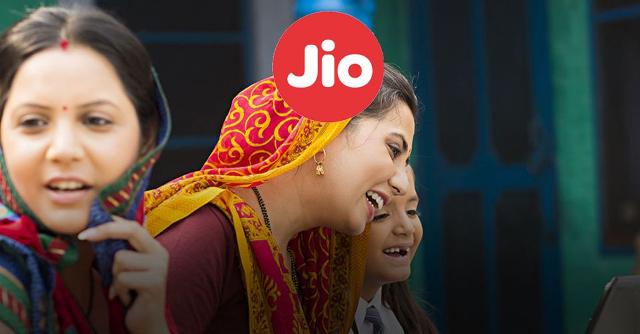Reliance Jio Infocomm, which launched its 4G services almost two years ago, is struggling in rural markets of India.
 Reliance Jio, promoted by India’s richest business-man Mukesh Ambani, has enhanced its rural presence with the 4G subscriber base touching 49.734 million in rural areas in March 2018 from 46.606 million in February 2018.
Reliance Jio, promoted by India’s richest business-man Mukesh Ambani, has enhanced its rural presence with the 4G subscriber base touching 49.734 million in rural areas in March 2018 from 46.606 million in February 2018.
Reliance Jio, the fourth largest telecom operator in India, added 9.429 million 4G users across India during this period. That means Reliance Jio added nearly 6 million 4G customers in non-rural areas as compared with nearly 3 million in rural locations. Jio does not have 2G and 3G presence. It will be launching 5G.
Reliance Jio is the largest 4G operator in India with 186.560 million subscribers on its all-India LTE network.
Airtel, Idea Cellular and Vodafone are currently facing challenging market conditions in both rural and urban locations. That’s why they are unable to add 4G subscribers in a big way as compared with Jio. TRAI (Telecom Regulatory Authority of India) does not reveal 4G subscriber base of Airtel, Idea Cellular and Vodafone.
But their rural presence is better than Reliance Jio.
Airtel has 156.946 million subscribers – on 2G, 3G and 4G networks — in rural areas out of the total subscriber base of 304.191 million.
Vodafone India’s mobile subscriber base in rural areas was 120.305 million out of 226.977 million.
Idea Cellular has 114.743 million in rural locations out of 211.209 million.
Reliance Jio has 45.22 percent share in the Indian wired and wireless broadband market in March 2018. Bharti Airtel with 20.76 percent broadband market share is the second largest broadband operator. Vodafone has 14.49 percent share in the Indian broadband space to take the third position. Idea Cellular has 9.66 percent share. BSNL has 5.11 percent share of the Internet market.
4G smartphones
Lack of cost effective 4G smartphones in rural telecom markets is one of the main reasons for poor demand for 4G services in rural locations.
Xiaomi, Samsung, Oppo and Vivo, the top four smartphone companies in India, do not want to miss any opportunities in the 4G market. But their 4G smartphones are not affordable for rural population, which still spend less than $2 on an average on mobile phone recharges per month.
The 4G phones are not affordable for majority of Indians in rural places at a time wireless chipset companies such as Qualcomm and MediaTek are trying to bring out innovative chips for 4G phones targeting the Indian telecom market.
The poor online reach of Flipkart and Amazon, two e-commerce companies, in rural areas is also contributing to the slow update of 4G in rural areas.

The top four vendors accounted for about 75 percent of all smartphone shipments to India, with Xiaomi and Samsung accounting for 56 percent. “The market continues to consolidate, with smaller vendors finding it extremely difficult to succeed in the face of Xiaomi’s growing prominence,” said Canalys Research Manager Rushabh Doshi.
Research firm IDC says smartphone makers shipped 30 million units in India in Q1 2018, achieving year-on-year growth of 11 percent. However, the Indian smartphone market remained almost flat compared to the previous quarter Q4 2017. This is despite the availability of smartphones with a number of data offers from telecom operators.
Upasana Joshi, senior market analyst at IDC India, said India’s 4G feature-phone market grew at more than 50 percent quarter-on-quarter, driven primarily by Jio Phone. Reliance Industries in the leader in India’s feature-phone market with 38.4 percent against Samsung Electronics’ 10.4 percent.
The mobile operator disrupted the market by introducing aggressively priced data plans at INR 49 in the initial weeks of the quarter acting as catalyst for growth, said IDC.
Baburajan K





